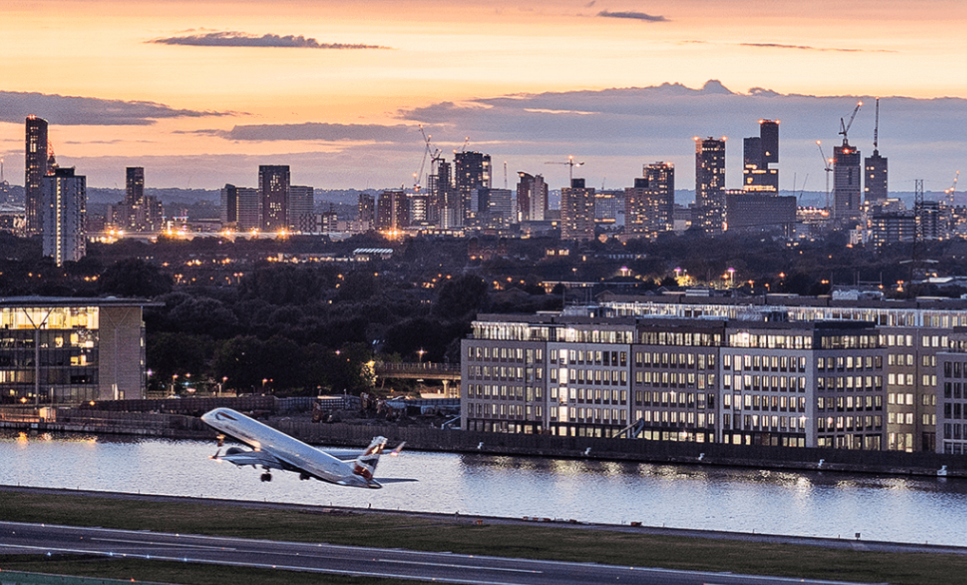
LONDON—Under a new long-term master plan, London City Airport (LCY) is expecting to handle 11 million passengers by the mid-to-late 2030s–more than double the 5.1 million that it handled in 2019.
“Our current planning permission allows us to accommodate up to 6.5 million passengers and 111,000 aircraft movements per year,” the airport said Dec. 4. “These annual limits are expected to be reached in the coming years.”
The new strategy updates London City’s 2006 master plan, which originally predicted 5 million passengers by 2020, growing to 8 million by 2030. Back then, aircraft movements were expected to hit 171,000 by 2030.
“Having updated our forecasts as part of this master plan, we expect passenger demand to use London City Airport to increase to 11 million passengers annually, accommodated by around 151,000 air transport movements, including 5,000 business aircraft movements,” London City said. “This long-term forecast is likely to be realized by the mid-to-late 2030s and could see our share of expected passengers across the London airports increase from around 2.8% to around 4.3%, dependent on how capacity develops at these other airports over time.”
Movements are now expected to rise more slowly than the 2006 plan predicted, reflecting trends toward larger average aircraft sizes and higher load factors. London City expects to hit the 6.5 million passenger limit before the movement cap.
London City believes it can support the forecast growth using its existing runway, without any changes to its operating hours or existing eight-hour night flight curfew.
“We have not included proposals for a new runway, to extend the length of our existing runway or to significantly expand our existing site boundary,” the airport said. Instead, the airport is planning “modest, incremental changes” to the airfield, to pave the way for more new generation aircraft.
The draft master plan was released in June 2019 and went through a 16-week consultation period. The final strategy was scheduled to be released in March 2020, however it was delayed to December 2020 because of the COVID-19 pandemic.
Under the original draft of the 2020 plan, London City was expecting to hit 11 million passengers and up to 151,000 movements by 2035. In light of COVID-19, the airport is now expecting to hit these figures in the mid-to-late 2030s.
“In the short term, it is clear that our focus has to be on recovering from the devastating impacts of COVID-19, supporting our communities and welcoming back passengers and airlines to London’s most central airport,” LCY CEO Robert Sinclair said. “As recent events have shown, it is not possible to be precise about future trends. However, we believe that the fundamentals underpinning future growth at London City Airport remain.”
During the height of the COVID-19 crisis, LCY temporarily closed. Several parts of the airport’s development program have already been completed, including eight new aircraft stands, a full-length parallel taxiway and new passenger facilities, but remaining plans have been put on hold.
“The new infrastructure will allow us to provide additional capacity when demand returns and provides a firm foundation for the future terminal extensions, now that the most complex infrastructure activities have been completed,” the airport said.
